Bich Dong Pagoda in Ninh Binh is a destination not unfamiliar to young travel enthusiasts, and it is also an unmissable stop for any traveler when visiting Ninh Binh. People often mention this location along with the term “Tam Coc – Bich Dong.” Many people mistakenly think of it as a single tourist destination. However, in reality, these two places are completely separate. Bich Dong Pagoda still retains its ancient and pristine charm. The entrance is about 2.5km apart from the journey to Tam Coc. Tourists can rent a bicycle to leisurely explore the area of ripe rice fields of Tam Coc and the majestic limestone mountains. When visiting Ninh Binh, do not miss this attractive destination. Let’s explore this location together with DanangPrivateCar.com’s!
Table of Contents
Information about Bich Dong Pagoda.
Bich Dong Pagoda is one of the famous natural landscapes in Ninh Binh and the entire country. It is known as the “Second Most Beautiful Cave Under the Southern Sky,” meaning the second most beautiful cave in the southern region after Huong Tich Cave in Hanoi.
Bich Dong Pagoda is a historical and cultural relic that has been designated as a special national heritage site. It is part of the Trang An scenic complex, which is recognized by UNESCO as a world cultural and natural heritage.
Many tourists wonder why the pagoda is named Bich Dong. The word “Dong” means cave, and “Bich” here means green. But what is green? Is the entire cave green? Bich Dong Pagoda in Ninh Binh is a cluster of pagodas built on the mountainside facing the river. Another part is situated deep inside a cave. The green color here could refer to the vast greenery of the mountains and forests. It is also the green color of the surrounding green stone. Right on the stairs leading to Trung Son Pagoda, you will encounter a massive green stone slab. Inside the cave, there are stalactites that are hundreds of millions of years old. Some areas still have flowing water, and the stalactites continue to develop over time.
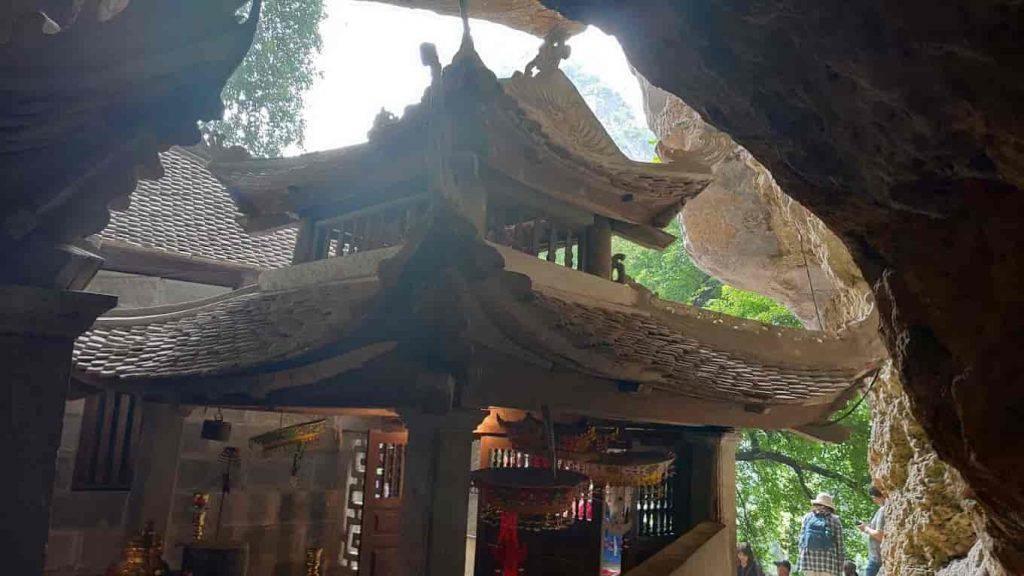
People are often curious about the beauty of the pagoda perched on the limestone mountain, partly due to curiosity about the pagoda’s charm atop the rocky terrain and partly driven by the enchanting photos taken by international tourists.
Despite being located in a remote area surrounded by mountains and valleys, Bich Dong Pagoda in Ninh Binh remains a frequent destination for visitors from both near and far. It offers a sense of tranquility, peace, and a touch of serenity amidst the backdrop of the natural landscape, which further enhances its appeal for travelers venturing to the land of Ninh Binh.
Where is Bich Dong Pagoda?
- Address: Dam Khe Hamlet, Ninh Hai Commune, Hoa Lu District, Ninh Binh Province
Bich Dong Pagoda is an ancient temple built on the mountainside. Initially, the temple was named Bach Ngoc Thach Son Dong, meaning a beautiful and white temple like a pearl within the mountains and valleys. In 1774, during a visit by Lord Trinh Sam, the temple was renamed Bich Dong Pagoda. This is one of the famous scenic spots of the former imperial city, Cố Đô.
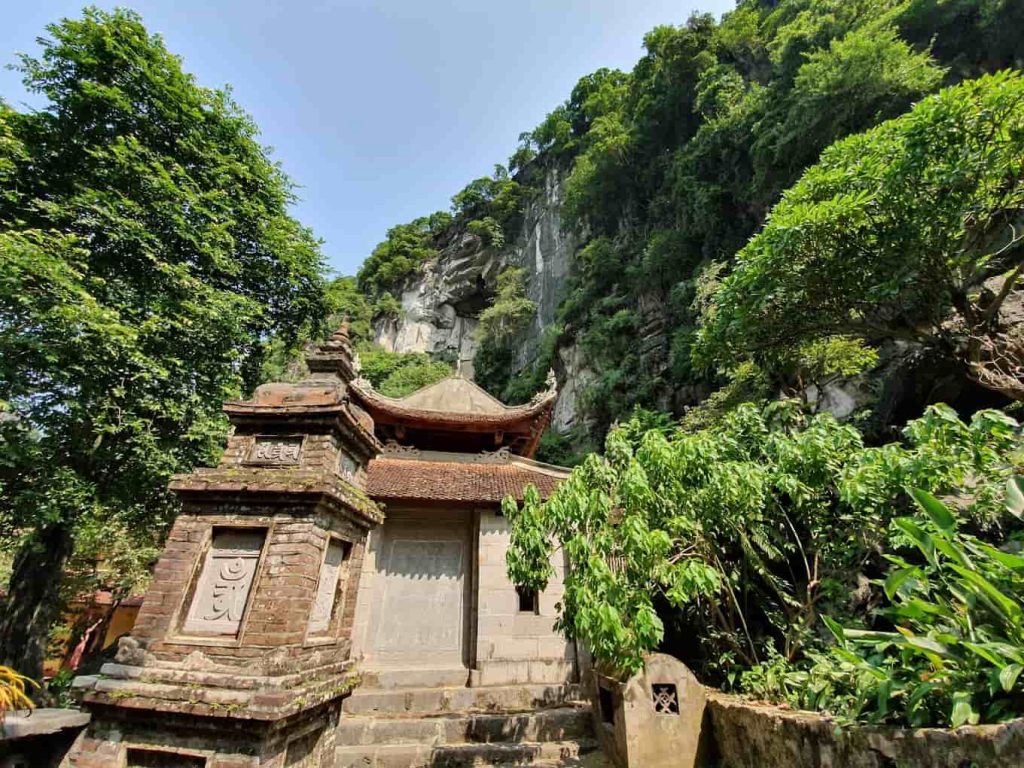
Having existed for nearly 600 years, this place holds many cultural and historical values. It is one of the most sacred temples in Ninh Binh where pilgrims visit every year to pray for luck for their families and loved ones.
History of Bich Dong Pagoda.
In the year 1705, during the reign of King Le Du Tong, there were two monks named Tri Kien and Tri The. One was from Vong Doanh, and the other from Dong Xuyen, Nghia Hung District, Nam Dinh Province. They met and became sworn brothers. Both monks were devoted to Buddhism and together they traveled to spread the teachings of Buddha and built temples.
Upon arriving at Bich Dong Mountain, they found the location to be beautiful and suitable for building temples. The two monks decided to stay, contribute their efforts, and build three new temples: Lower Pagoda, Middle Pagoda, and Upper Pagoda.
In the year 1707 (Dinh Hoi), the two monks, Tri Kien and Tri The, cast a large bell, which is still hanging at the Dark Cave. Two years later, in August, they inscribed a stone stele in Bich Dong Pagoda using Han characters. In the year 1774 (Giap Ngo), Lord Trinh Sam visited this place. Perhaps impressed by the panoramic view of the lush mountains, caves, rivers, fields, and the vibrant greenery of the temple, Lord Trinh Sam named it Bich Dong Pagoda.
How to get to Bich Dong Pagoda?
Located within the Tam Coc – Bich Dong tourist complex, you can combine a visit to both places. First, you’ll go to Tam Coc by boat along the Ngoc Dong River and then continue downstream to Bich Dong. Here are the means of transportation you can use to visit Bich Dong Pagoda in Ninh Binh.
Taxi: Suitable for young travelers in a group. The advantage of taking a taxi is the comfortable space to rest. Plus, the driver will take you directly to your destination, so you won’t need to worry about getting lost.
Bicycle: You can rent a bicycle to travel from Tam Coc to Bich Dong Pagoda. Immerse yourself in the beautiful natural scenery along the way. It’s an enjoyable experience using a bicycle for transportation.
Motorbike: You’ll enjoy the cool breeze and admire the majestic mountains on both sides of the road. You can rent a motorbike at your accommodation or from rental businesses in Ninh Binh.
Walking: While it might take more time, walking is a choice favored by many tourists. With walking, you can get up close to the natural scenery. Stopping for photos and rest is easy along the way.
If you are in the capital city of Hanoi and wish to visit Bich Dong Pagoda in Ninh Binh, you can promptly book a private car journey from Hanoi to Ninh Binh with DanangPrivateCar.com’s. Our door-to-door service and our basic English-speaking drivers will ensure you the safest and most comfortable trip.
Exciting Experience at Bich Dong Pagoda.
Bich Dong Pagoda carries the distinctive architectural style of ancient Vietnamese temples. It consists of three pagodas within three caves, including two dry caves and one water cave. The dry caves are Bich Dong Cave and Dark Cave, while the water cave is Xuyen Thuy Cave located underground.
The Entrance Path to the Pagoda.
The most unique feature of the temple is the “Three-Character” architectural structure in Chinese characters. Unlike temples with a Cong-style structure, where the main hall connects three buildings, here the three pagodas are entirely separate. They are Lower Pagoda, Middle Pagoda, and Upper Pagoda, aligned vertically on the mountainside from the highest level to the lowest.
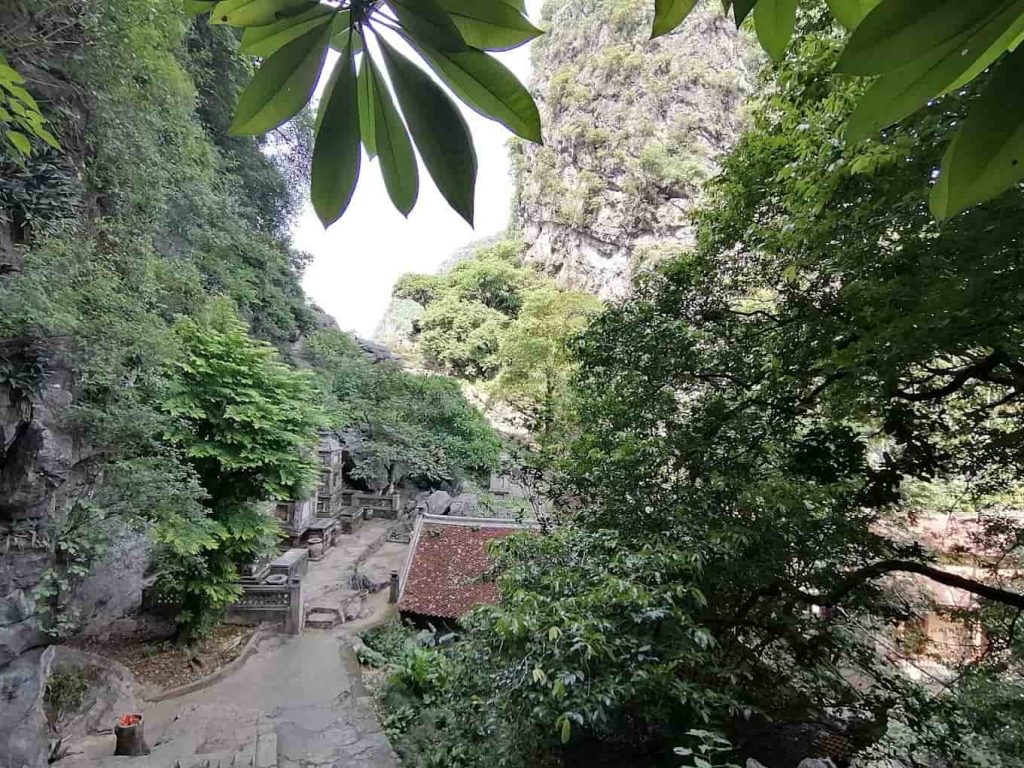
Upon visiting the pagoda, you’ll cross a stone bridge leading to the Tam Quan Gate. This area exhibits a strong ancient architectural influence, with a three-tiered gate and intricately curved tiled roofs. The Tam Quan Gate is also a favorite spot for tourists to take photos. The scenery here portrays a serene countryside with lotus ponds, rocky mountains, and a sense of tranquility.
Lower Pagoda.
Passing through the Tam Quan Gate, you’ll come across a path at the foot of the mountain that stretches about 55 meters. Following this path will lead you to the area of the Lower Pagoda within the Bich Dong Pagoda complex in Ninh Binh. The Lower Pagoda is oriented to the northwest and lies at the base of Bich Dong Mountain.
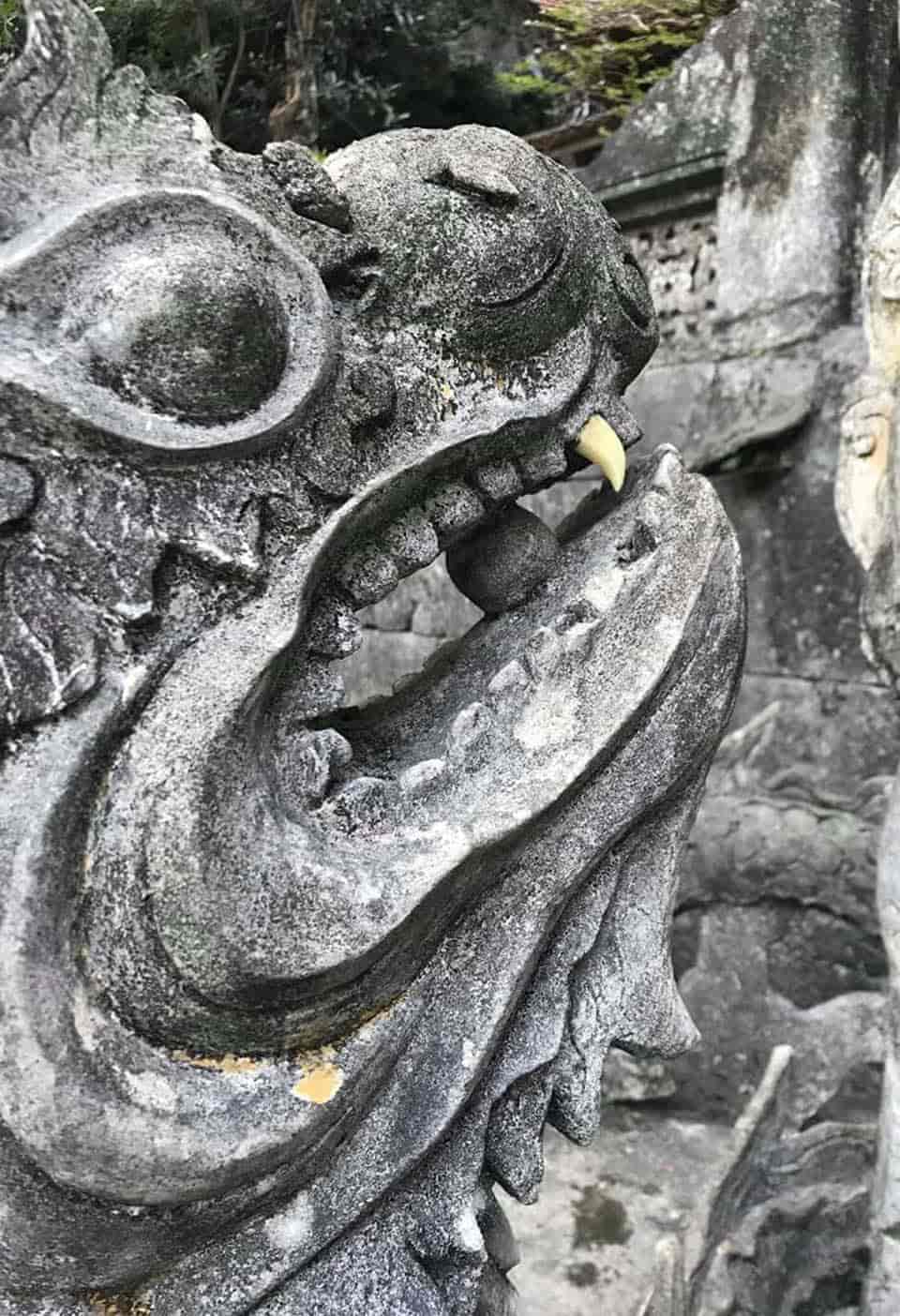
Similar to other temples, the architectural style of the Lower Pagoda follows a “Dinh” shape. It consists of a horizontal structure as the front hall with five bays and a vertical structure as the upper hall with two bays. There are tall and sturdy wooden columns as well as large stone columns. The roof of the pagoda is curved, consisting of two layers with eight sections. Due to the higher elevation of the temple floor compared to the courtyard, the temple has three stone steps leading up, creating an additional, lower roof that appears as if the pagoda has three tiers.
Upon passing through the temple’s entrance hall, you’ll step into the main courtyard. Above the central bay of the main courtyard hangs a stone stele inscribed with the Han characters “Mao Co Than Thanh,” meaning the appearance of the ancient temple is truly sacred. Inside the worship hall, there are various Buddhist statues and altar items, including incense burners and lanterns.
Middle Pagoda.
To reach the Middle Pagoda, you need to turn towards the Lower Pagoda and ascend 90 stone steps on the mountainside, forming a graceful S-shape. The initial impression tourists have of this rocky wall is that it resembles the shape of a dragon.
Upon reaching the Middle Pagoda, the rocky wall opens up like the wide-open mouth of a dragon. The upper jaw forms an arched stone canopy, while the lower jaw is flat and surrounds the temple courtyard.
On the roof of the pagoda is a carved stone stele bearing the inscription “Bich Dong” in Han characters. Next to this inscription are the names “Nguyen Nghiem Phu De” and “Nhat Nam Nguyen Chu But,” referring to Trinh Sam, who was the leader of Japan during that time.
Dark Cave.
The next important destination not to be missed during your journey to Bich Dong Pagoda in Ninh Binh is the Dark Cave. To reach the Dark Cave, you need to ascend 21 stone steps nestled within dense green forests. Upon entering the Dark Cave, the first sight that greets you is a large bronze bell cast in 1707. This bronze bell serves as a memento to honor the contributions of the two revered monks, Tri Kien and Tri The.

Despite its name, the Dark Cave is illuminated by electric lights. On the right side of the cave entrance is a depiction of three Buddha statues carved in stone. This symbolizes endurance. In the center of the cave is a statue of the Buddha Amitabha. To the right is Van Thu Bo, while to the left are Avalokiteshvara and Longevity.
Upper Pagoda.
To reach the Upper Pagoda, you need to climb an additional 40 stone steps along the mountainside. The Upper Pagoda stands atop the mountainside, positioned at the highest point near the summit of Bich Dong Mountain. The pagoda is about 60 meters above the ground-level courtyard. The Upper Pagoda is oriented towards the southeast and is dedicated to the worship of Goddess Quan Am (Avalokiteshvara). There are two shrines on either side of the pagoda, dedicated to the Earth Deity and the Mountain Deity. Adjacent to the pagoda is a water reservoir called Cam Lo Water, dedicated to the Goddess Quan Am.
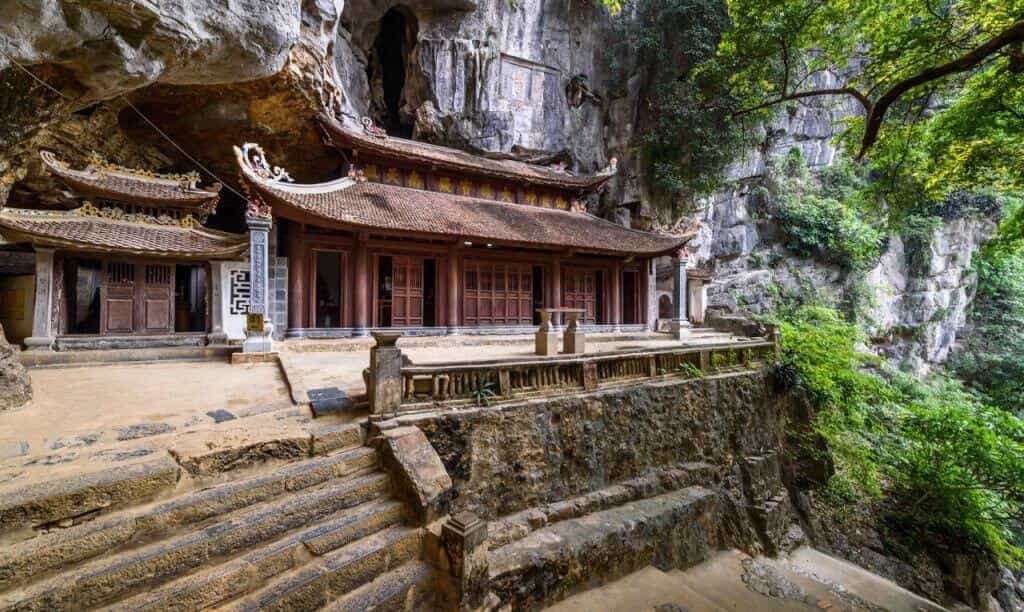
From the Upper Pagoda, visitors can catch a sight of five separate peaks, each independent and facing Bich Dong Mountain like a blossoming lotus. These are the Ngũ Nhạc Mountains, consisting of Tầm Sặng, Gia Định, Con Lợn, Đầu Cầu, and Hạng Dựa peaks.
Nearby Tourist Destinations around Bich Dong Pagoda.
Tam Coc.
Tam Coc is a relatively close destination to Bich Dong Pagoda, with a road stretch of 2.5 km. Therefore, when visiting Bich Dong Pagoda, don’t miss out on this spot!
Tam Coc, which means “Three Caves,” consists of Hang Ca, Hang Hai, and Hang Ba caves. All three caves are formed by the Ngo Dong River passing through the mountains. Tam Coc is famous for boat tours and was first developed as part of the Tam Coc Bich Dong tourist area.
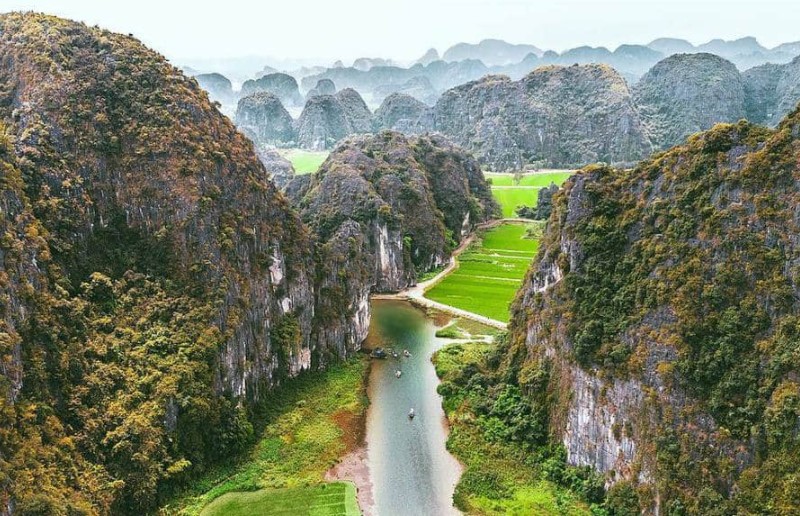
Here, you’ll experience a waterway tour by sitting in small boats guided by boatmen. You’ll immerse yourself in the stunning scenery, passing through breathtaking caves and feeling the cool air emanating from the stone formations.
The entire boat tour for tourists takes around 1.5 to 2 hours. The Tam Coc landscape, especially along the Ngo Dong River, can change with the seasons. If you love vibrant yellow landscapes, May is the perfect month to visit as it is the season of ripe rice fields.
Linh Coc Pagoda.
Located less than 1 km from Bich Dong Pagoda, you can take a leisurely walk to Linh Coc Pagoda to explore this site. Nestled within the Moc Mountain, the pagoda faces west, overlooking a water field. Linh Coc has a historical origin dating back to the reign of King Tran Thanh Tong. The pagoda’s courtyard is quite spacious and includes ancestral houses at the foot of the mountain. The pagoda’s design features three bays facing northwest.
Linh Coc Pagoda features statues of the monk A Nan Da and a Western-style sage, characterized by a high nose, coiled hair, and a cap-like hat. The main hall with five bays faces southeast. The temple of the Mother Goddess, on the other hand, turns its back to the mountainside and is built in the shape of the letter “Tam.” It houses the Thanh Mau Thoai, Thanh Mau Lieu Hanh, and Thanh Mau Thoan deities.
Thai Vi Temple.
Located in Van Lam Village, Ninh Hai Commune, Hoa Lu District, Ninh Binh Province, Thai Vi Temple is about 2 km from Tam Coc’s boat dock and a little over 3 km from Bich Dong Pagoda. This place stands as a remarkable cultural landmark in the peaceful northern countryside. Here, visitors can not only make offerings and prayers but also delve into the rich historical and cultural values of the ancient capital.
Thai Vi Temple is a place of worship for Kings Tran Thai Tong, Tran Thanh Tong, and statues of Tran Hung Dao, Tran Quang Khai, and Queen Tran Thi Dung. In the mountainous area of Trang An – Tam Coc, the Tran dynasty kings gathered to build the Vũ Lâm Palace during the resistance against the Mongol invaders.
Notes for Visiting Bich Dong Pagoda.
- Bich Dong Pagoda offers free admission to all tourists.
- Compared to Tam Coc, Bich Dong Pagoda typically receives fewer tourists. The number of eateries outside serving tourists is also fewer. Ensure that you have all the necessary items for your visit.
- Choose to visit Bich Dong Pagoda around April when the weather is relatively dry, making the boat ride to Tam Coc more enjoyable. If you visit during the rainy season, be cautious as the pathways may become slippery.
- When going to the temple, opt for appropriate, respectful attire. Additionally, be prepared for walking and climbing quite a few stairs when exploring Bich Dong Pagoda. Comfortable sports shoes or sandals are recommended for easy movement.
- Bring some cash with you to contribute to the temple’s charity fund. Maintain mindfulness and safeguard the property of Bich Dong Pagoda during your visit.
Bich Dong Pagoda in Ninh Binh holds great historical and natural landscape values. Undoubtedly, this will be a must-visit tourist destination in Ninh Binh that you shouldn’t miss out on. Exploring the Bich Dong Pagoda site takes only about an hour, and you’ll witness the significance of this temple firsthand. DanangPrivateCar.com’s offers this article to our esteemed readers to provide more insight into this tourist destination as well as other landmarks in Ninh Binh.

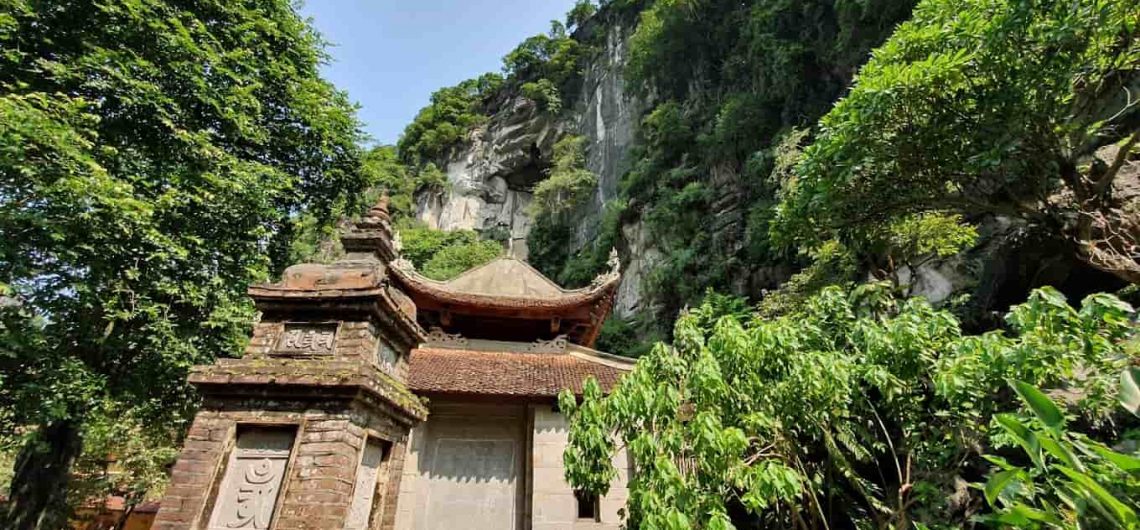
Comments